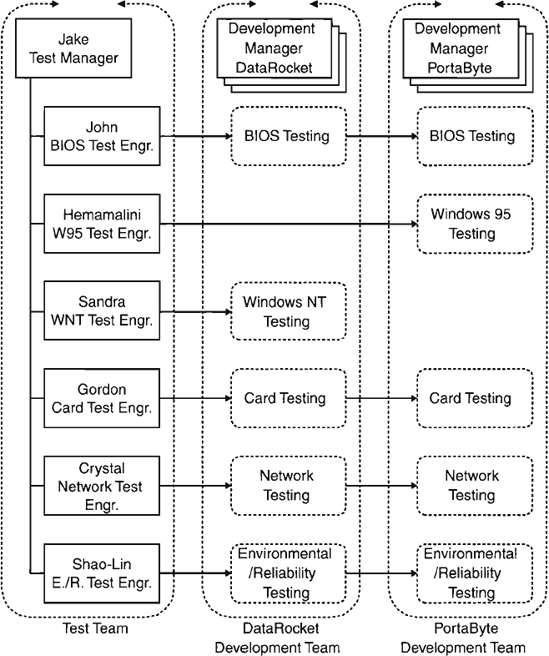8.3. Specialists or Project Resources? Organizational Models
In a very small company or on a dedicated project effort, everyone works on a single project, and the question of organizational models does not exactly dominate the discussion. Suppose, however, that you have two, three, or a dozen projects going at one time. Do you break your team members into groups based on the projects they are working on, or based on the special skills they have?
Let' s look at an example. You are the test manager at Winged Bytes. Two systems are in the test lab at the same time, the DataRocket server and the PortaByte laptop. Organization by skills assigns John to the BIOS, Hemamalini to Windows 95, Sandra to Windows NT, Gordon to PC Card and PCI add-on cards, Crystal to networks, and Shao-Lin to environmental and reliability testing. Organization by project assigns John, Hemamalini, and Sandra to the DataRocket team, while Gordon, Crystal, and Shao-Lin work on the PortaByte. Figure 8.4 shows an organizational model based on skills, while the model shown in Figure 8.5 is based on projects.
Figure 8.4. A skills-based test organization.

The skills-based model has a lot to recommend it, especially in the high-technology world. Instead of everyone having to keep up with many topics, each member of your test staff can focus on the quirks and subtleties of his or her own area of specialization. In ...
Get Managing the Testing Process: Practical Tools and Techniques for Managing Hardware and Software Testing now with the O’Reilly learning platform.
O’Reilly members experience books, live events, courses curated by job role, and more from O’Reilly and nearly 200 top publishers.

